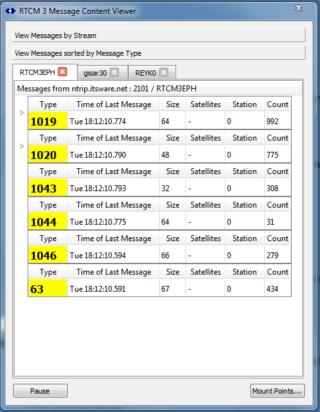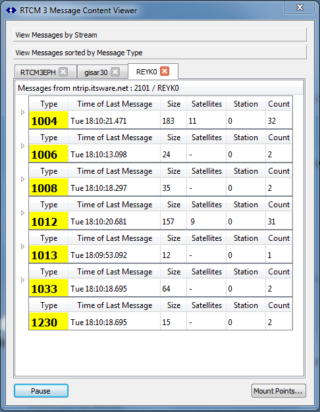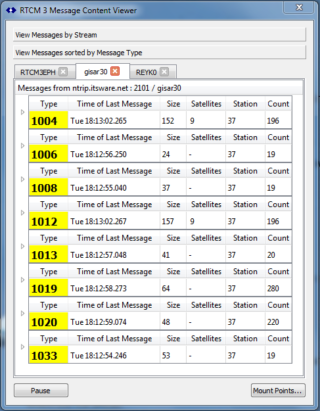This article demonstrates detailed debugging using SNIP’s RTCM3 Decoder dialog to determine what messages are present in a given connection stream.
Background
One of the common issues when a client claims things are suddenly not working is that they no longer have access to a suitable set of ephemeris messages to provide their device with orbital data. There can be many reasons for this, and not all users will obtain ephemeris messages by looking up at the local sky (and waiting an agonizing 25 seconds). Some users will simply connect to a stream which is known to provide such data. [Consider the ntrip.itsware.net caster if you need a worldwide broadcast ephemeris data stream] If the message mix found in the stream in question changes, the user may suddenly be calling. All of these conditions require an easy way to check on the contents of a given stream.
Solution
By using SNIP’s RTCM3 Decoder dialog you can easily determine what messages are present in a given connection stream. For GPS you are seeking for 1019 message types, while for GLONASS you are seeking for 1020 message types. If you need a refresher on the various message types, read this article for a quick cheat sheet.
Here are three representative streams, two of which DO have ephemeris message content, and one that does not.
Click on each image to see it displayed full size.
The RTCM3 Decoder dialog has been used to provide a way to determine what these streams provide.
- RTCMEPH contains 1019 and 1020 message, and other orbital data (1043, 104,6 and 63).
- REYKO contains no 1019 and 1020 message or any other orbital message types.
- gisar30 contains 1019 and 1020 message, as well as six other non-orbital message types.



